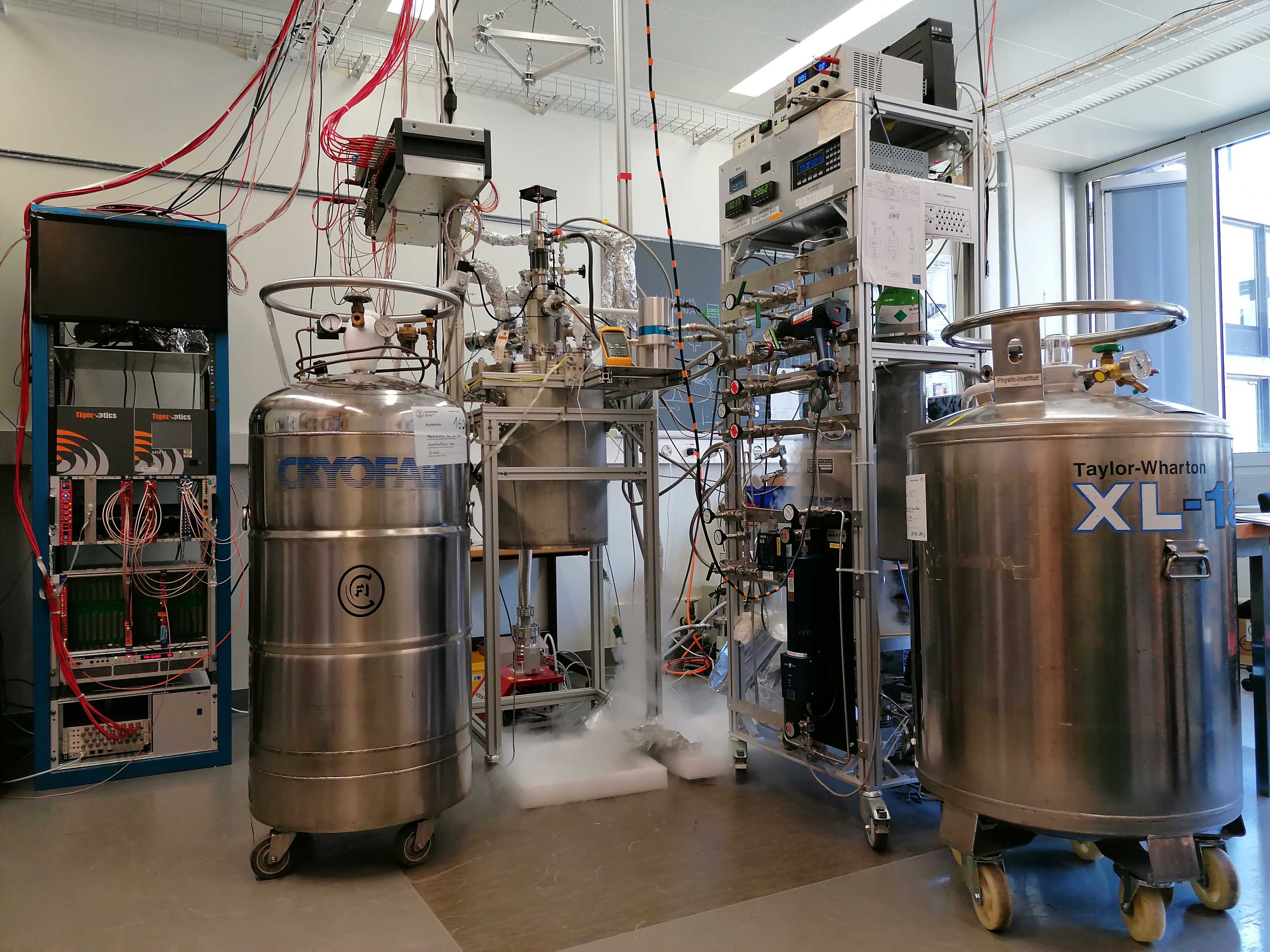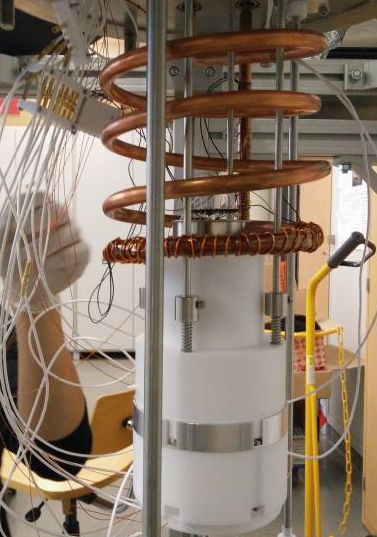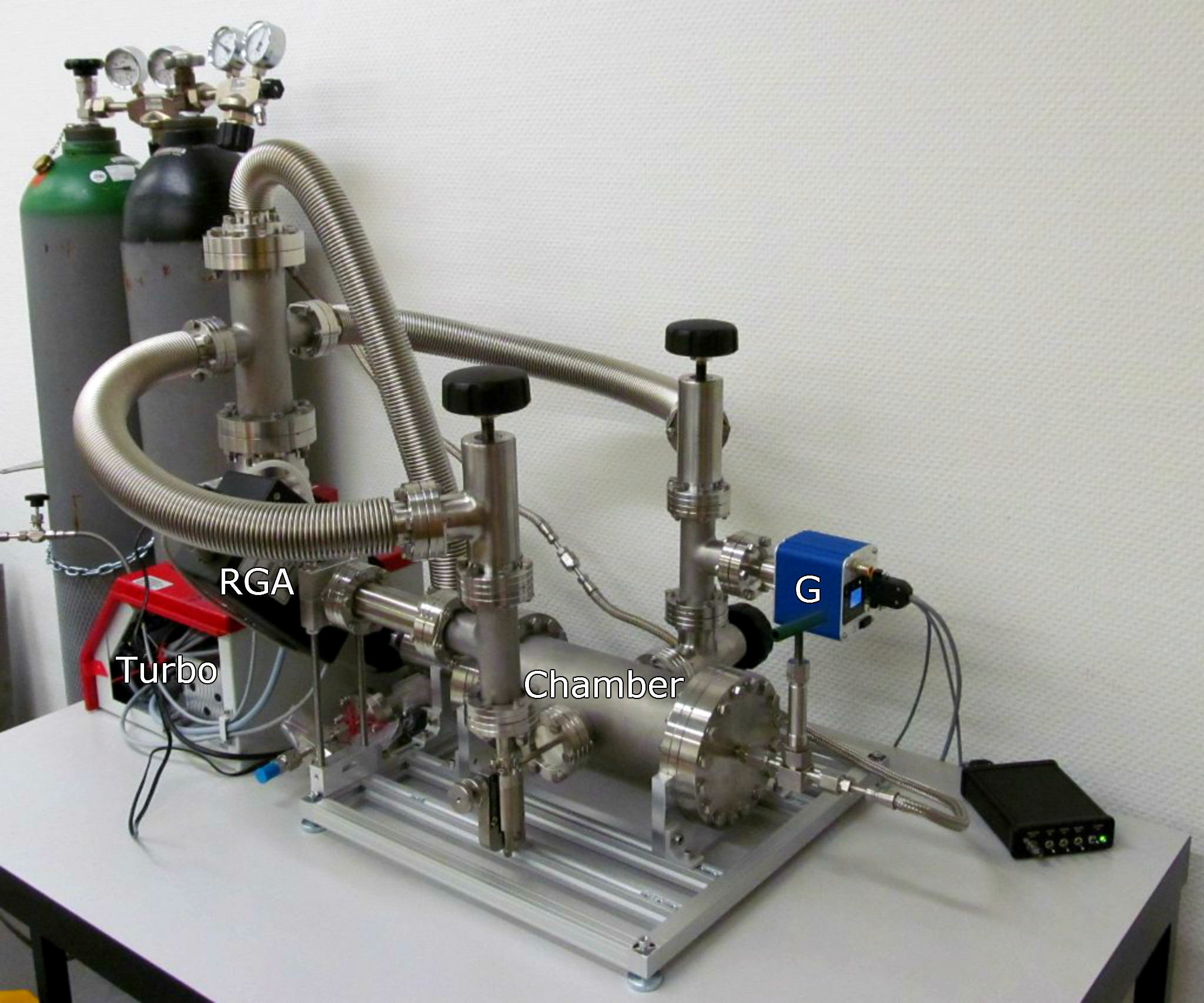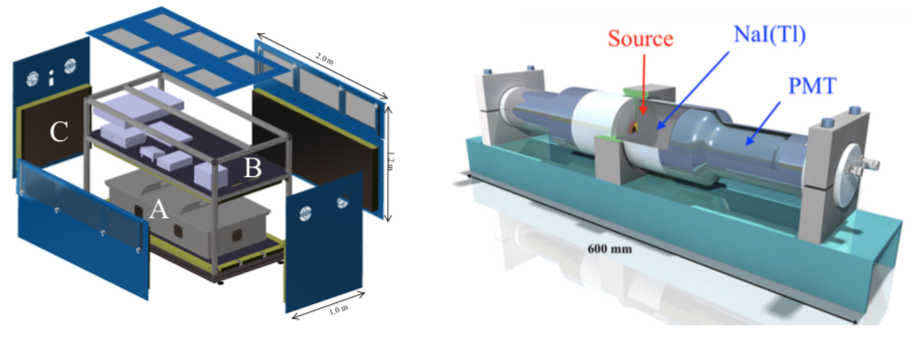The MarmotX PMT-Testing Facility

MarmotX is a detector to calibrate and test photosensors in gaseous and liquid xenon. At its core is a double walled cryostat with a 60 L capacity that can maintain the liquid xenon within tens of mK of the set temperature.
In the past it was used to test 3-inch PMTs in bulk for the XENONnT experiment. Up to ten tubes were characterized at a time. For the future dark matter detector XLZD we characterized eight 2-inch multianode PMTs. The 2-inch tubes feature a compact form factor and segmented (2x2) anodes that can be read out individually. The expected benefits are a reduction in required support structure and an increase in resolution with respect to the position reconstruction of events.
To verify this, MarmotX will house a dual-phase xenon time projection chamber (TPC) with a target mass of up to eight kg in the near future. It will feature an array of 2x2 2-inch tubes in the top and we will be able to perform measurements of fundamental properties of liquid xenon as well as explore novel calibration techniques for future dark matter detectors.
The LArS Facility

The liquid argon setup (LArS) is a small, single-phase detector which can be operated with liquid or gaseous argon or nitrogen to test the performance of several types of photosensors. Here one can see the inner chamber which contains a holder made out of PTFE capable of supporting either a photomultiplier or several SiPM arrays. To cool down the chamber, liquid nitrogen is flushed through a copper coil, where the cooling power can be set via a constant flow rate at the outlet of the coil. The temperature control occurs via a heating foil wrapped around the cooling coil, regulated by a PID controller.
We have first employed LArS to test several reflecting foils coated with TPB for the liquid argon veto of the GERDA phase II experiment. More recently, we have characterised a 3-inch PMT with a MgF2 window which would allow for a direct detection of the scintillation light of argon at 128 nm, without wavelength shifter.
Currently we use the LArS facility to characterise several types of VUV-sensitive SiPM arrays as a function of temperature. These solid-state photon detectors are candidates to replace PMTs in future liquefied noble gas experiments.
The Emanation Setup

The Emanation Measurement System has been developed and built at the University of Zürich for measurement of gas emanation from components used in liquid argon and xenon, in the GERDA and XENON experiments.
All materials emit contaminants, such as water or nitrogen, from their surface. As the scintillation light in liquid noble gases requires a high purity, critical detector components must be characterised in terms of their emanation rates, to avoid an excessive contamination of the scintillating medium.
The Emanation Measurement System is used to determine the emanation rate from a sample by evacuating a test chamber containing the sample and measuring the amount of emitted contaminants into the vacuum chamber with a residual gas analyzer based on a mass spectrometer.
The Xurich Time Projection Chamber
To measure the ionization and scintillation yield of electronic recoils at low energies, we have built a small dual-phase xenon time projection chamber (the Xurich I TPC), which was operated in our laboratory in Zurich. The results of our studies were published in (Phys. Rev. D 87, 115015, 2013). The same TPC has been employed in R&D studies of the energy calibration with a 83mKr source, which is now conventionally used in large LXe detectors; the results were published in (Review of Sci. Instr. 81, 7, 2010).
To perform light and charge yield measurements for nuclear recoils at low energies we realised the Xurich II TPC. The picture at the left shows the inner chamber. The target volume is enclosed in a PTFE cylinder of 30 mm height and 30mm diameter. The scintillation light is detected by 2 PMTs (2-inch Hamamatsu R9869), one in the liquid xenon below the cathode grid and one in the gas phase above the anode grid. The contribution of multiple neutron scatters is minimised by reducing the TPC size and the amount of surrounding materials, in particular PTFE, which has relatively high cross-section for neutron interactions. The electric field uniformity within the TPC has been optimized via extensive simulations with COMSOL, resulting in the maximum variations below 4%. The instrument is described in arXiv:1712.08607. It was characterized, then upgraded with a SiPM photosensor array as a top detection plane, as published in EPJ C 78: 351 (2018) and in EPJ C 80(5): 477 (2020), respectively.
The Modulation Experiment

We operate a setup for the stable long-term measurement of gamma emissions from beta decays. It includes radioactive isotopes that are monitored by eight NaI(Tl) detectors in a temperature-controlled box, each source being seen by a pair of 3'' x 3'' detectors. The setup is part of an experiment which operates 4 identical boxes located in Switzerland, the Netherlands, Brasil and the US.
While three detector pairs monitor a 44Ti, 54Mn and 60Co source each (in the Zurich setup), the fourth pair records the environmental radioactive background. The detectors are shielded by 5 cm of lead and separated by about 10 cm. The temperature, pressure, humidity, magnetic field, as well as the radon levels and the high-voltage of the detectors are continuously monitored.
The aim of the experiment is to investigate systematic sources which can impact counting experiments using NaI(Tl) detectors, as well as claims for observed variations in nuclear decay constants at the O(10-3) level.